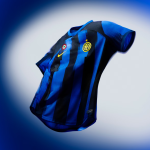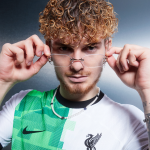Much like at other big clubs, Liverpool’s number 7 is nothing short of sacred. Worn by legends of the game and eternally associated with iconic moments, this number has seen it all. Its status has remained unchanged since the 1960s, and with Luis Díaz announcing himself as its newest owner, it is only right to reminisce about the eras that Liverpool’s number 7 defined and the players that have made it what it is today, all through an aesthetic lens.
Kenny Dalglish - 1980s
Kenny Dalglish looked like your typical 1980s player: ‘King’ PUMA boots in their classic black & white version, short shorts, socks below the knee, and perfectly brushed hair to the side. 20 or so years after Beatlemania, Dalglish’s style seemed to be impeccably embodying that of the famous rock band that had formed in Liverpool in 1960, and his sober look reflected the no-nonsense, conservative, and closed-off mentality that characterized English football during the 1980s.
Steve McManaman - 1990s
With the advent of the Cool Britannia phenomenon throughout the 1990s, everything had changed when Steve McManaman took up the no. 7 jersey. While Dalglish visually sponsored the quiet football and social scene in England, McManaman fully immersed himself in those ‘90s fashion trends that directly opposed the 1980s. Slicked back, long, wavy hair freely flapping about on the field with him, and an oversized shirt tucked into his shorts. He could often be seen sporting Umbro boots in a time of particular optimism for the brand, when they had stars Michael Owen and Alan Shearer under contract and sponsored teams such as Manchester United, Ajax, and the Brazil national team seeing enormous success in international competitions. Lastly, the iconic Carlsberg shirt sponsor only adds to the iconic connotation of the number 7 during McManaman’s tenure.
Luis Suárez - 2010s
Luis Suárez has never been a particularly ‘fashionable’ footballer, and his aesthetic side at Liverpool is heavily overshadowed by his unforgettable performances. It was during his Merseyside stint, however, that El Pistolero first wore the now iconic and globally recognizable wrist guard on his right hand. First worn because of a healing injury, the guard accompanied him and his number 7 jersey as a unique, recognizable “decoration” that has since then become a staple in the Suárez look and helped pave the way for other players to start expressing themselves with interesting accessories. Other than that, longer socks and colorful boots were the norm during Suárez’s Liverpool days, as opposed to McManaman’s and Dalglish’s times.




















